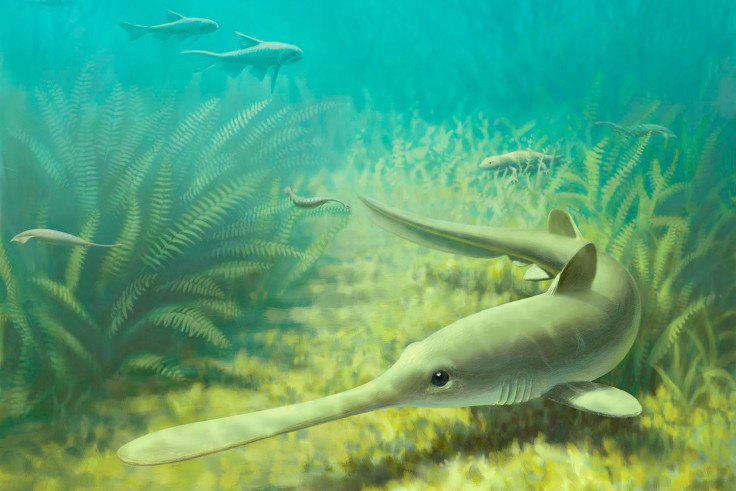Prehistoric Shark Nursery In Illinois Could Explain Secrets Of Ancient Shark Migration

Scientists have found a prehistoric shark nursery with fossils of young sharks and eggs at the site of a nuclear power plant in northeastern Illinois, believed to be the earliest such nurssery ever discovered.
According to the scientists, the nursery dates to 310 million years ago, and it was full of long-snouted Bandringa sharks that had migrated downstream from freshwater swamps to a tropical coastline to spawn. The scientists said the nursery is located at the fossil-rich Mazon Creek area, notably at the site of the Braidwood Nuclear Generating Station, Discovery News reported.
“This is the first fossil evidence for a shark nursery that's based on both egg cases and the babies themselves,” Lauren Sallan of University of Michigan and the study’s co-author said in a statement. “It's also the earliest evidence for segregation, meaning that juveniles and adults were living in different locations, which implies migration into and out of these nursery waters.”
According to the findings, published in the Journal of Vertebrate Paleontology on Tuesday, the Bandringa fossils mark the earliest known example of shark migration. The study is also said to reveal the earliest example of shark nurseries where fossilized egg cases and juvenile sharks were preserved in the same sediments.

"This pushes migratory behavior in sharks way back," Sallan said. "These sharks bred in the open ocean and spent the rest of their lives in fresh water. No shark alive today is known to do that."
Scientists said that the Bandringa, which resembled present-day sawfish and paddlefish, is likely one of the earliest close relatives of modern sharks. Juveniles were 4 to 6 inches long and grew into adults measuring up to 10 feet.
Until now, researchers believed that the genus Bandringa contained two species, one that lived in freshwater swamps and rivers and another that lived in the shallow ocean.
However, after re-evaluating fossils from 24 individuals, the scientists concluded that the Bandringa was a single species that lived, at various times during its life, in fresh, brackish and salt water. The physical differences between the purported two different species were due to different preservation processes at marine and freshwater locations, scientists said.
The Mazon Creek deposit is known for its extremely diverse, well-preserved fossils, with more than 320 animal species identified, according to the Illinois State Museum. While many of those animals lived in shallow marine bays, other plants and animals lived in muddy areas along rivers that emptied into the bay.
© Copyright IBTimes 2025. All rights reserved.






















